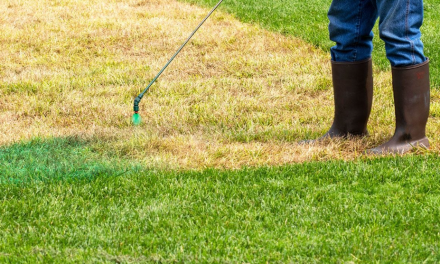Step into a world where delicate wings shimmer in the light, scales glint like precious jewels, and tiny paws tread silently on invisible paths. This is the realm of glass animal figurines, where artistry and imagination converge to create miniature marvels that capture the hearts of collectors and enthusiasts alike. More than just trinkets, these glass sculptures represent a fascinating intersection of craftsmanship, symbolism, and whimsy, offering a unique lens through which to appreciate the natural world.
Unlike their monumental counterparts, glass animal figurines hold a certain intimacy. Their small scale invites close inspection, revealing intricacies of form and color that might go unnoticed in larger works. A dragonfly’s wings, crafted from hand-blown glass, become stained glass windows showcasing vibrant hues. A fox’s fur, painstakingly sculpted, shimmers with the iridescence of moonlight. In this miniature world, details reign supreme, transforming each glass animal figurine into a microcosm of artistry and wonder.
The charm of glass animal figurines extends beyond mere aesthetics. They often carry symbolic weight, embodying cultural significance and personal connections. In ancient Egypt, scarabs fashioned from glass symbolized rebirth and transformation. In China, mythical creatures like the qilin were depicted in glass, representing good fortune and prosperity. Today, collectors might choose a hummingbird figurine to represent joy and resilience, or an owl to symbolize wisdom and knowledge. Each glass animal figurine can become a personal totem, whispering stories and holding memories within its fragile form.
But the appeal of glass animal figurines isn’t limited to realism. Glass sculpture artists have long pushed the boundaries of the medium, creating abstract sculptures and stylized interpretations of the animal kingdom. Influenced by cubism like Picasso’s Picasso sculptures, some glass animal figurines deconstruct and reassemble animal forms, challenging our perception of reality and sparking curiosity. Others, inspired by modern art movements, utilize bold colors and geometric shapes, imbuing their glass animal figurines with a sense of playfulness and whimsy.
This interplay between representation and abstraction is what makes glass animal figurines so captivating. They can be both whimsical companions and thought-provoking art objects, depending on the viewer’s perspective. A stylized horse figurine, its mane a fiery streak of red, might evoke the untamed spirit of the prairie, while a minimalist fish sculpture, crafted from clear glass, could represent the tranquil depths of the ocean. The inherent subjectivity of glass animal figurines allows them to resonate with individuals on a deeply personal level, sparking imagination and igniting the desire to explore the world around us.
The creation of glass animal figurines is a testament to the dedication and skill of glass sculpture artists. From the fiery dance of the glassblower shaping molten glass to the meticulous detail applied by hand, each glass animal figurine embodies hours of passion and expertise. In a world increasingly dominated by mass production, these miniature wonders stand as testaments to the enduring value of handcrafted artistry.
Whether nestled on a windowsill, displayed in a curio cabinet, or gifted to a loved one, glass animal figurines offer a unique window into the wonders of the animal kingdom and the artistry of glass. They are miniature ambassadors of beauty, imagination, and symbolism, reminding us of the magic that lies hidden within the seemingly ordinary. So, the next time you encounter a glass animal figurine, take a moment to appreciate its delicate form, intricate details, and symbolic significance. You might just discover a miniature masterpiece that sparks your imagination and opens the door to a world of wonder.
The journey of glass animal figurines through history is rich with diverse influences. In ancient Rome, brightly colored glass fish figurines were popular symbols of luck and prosperity. Later, during the Venetian Renaissance, intricate glass birds became prized possessions of nobility, showcasing the technical virtuosity of Venetian glass sculpture. These early figurines often adhered to realistic forms, capturing the intricate details of their animal subjects.
However, the 20th century saw a shift towards experimentation and abstraction in the glass art sculpture world. Influenced by movements like cubism and modernism, glass sculpture art began to explore new ways of representing animals. Picasso sculptures, known for their fragmented forms, inspired glass animal figurines with distorted proportions and bold geometric shapes. This move away from realism birthed abstract sculptures of animals, where color, texture, and form took center stage, challenging traditional expectations and sparking new visual dialogues.
Modern art sculptures like Calder’s whimsical mobiles featuring stylized glass animals further blurred the lines between representation and abstraction. These art sculptures captured the essence of movement and energy, prompting viewers to engage with the animal form in a dynamic and playful way. This era also saw the rise of glass sculpture art movements like pâte de verre, where crushed glass was fused and sculpted into fantastical creatures, further pushing the boundaries of the medium and igniting imaginations.
The legacy of these artistic movements continues to influence contemporary art sculptures. Today, we see a vibrant tapestry of styles, ranging from hyper-realistic bird sculptures that capture every feather with delicate precision to abstract interpretations of animals, where form dissolves into swirling colors and textures. Glass sculpture artists like Lino Tagliapietra and Dale Chihuly have mastered the art of combining technical prowess with artistic vision, creating glass animal figurines that are both breathtakingly beautiful and deeply thought-provoking.
Whether adorning a shelf or perched on a bedside table, these miniature marvels provide a gateway into the vast and awe-inspiring world of animals. Each glass animal figurine, with its unique story and artistic expression, holds the potential to transport us to distant lands, spark conversations about nature’s beauty, and connect us to the wonder that lies hidden within the everyday. So, next time you encounter a modern art sculpture, remember, it’s not just a trinket; it’s a testament to artistic heritage, a symbol of wonder, and a miniature ambassador of the animal kingdom, waiting to share its magic with the world.











